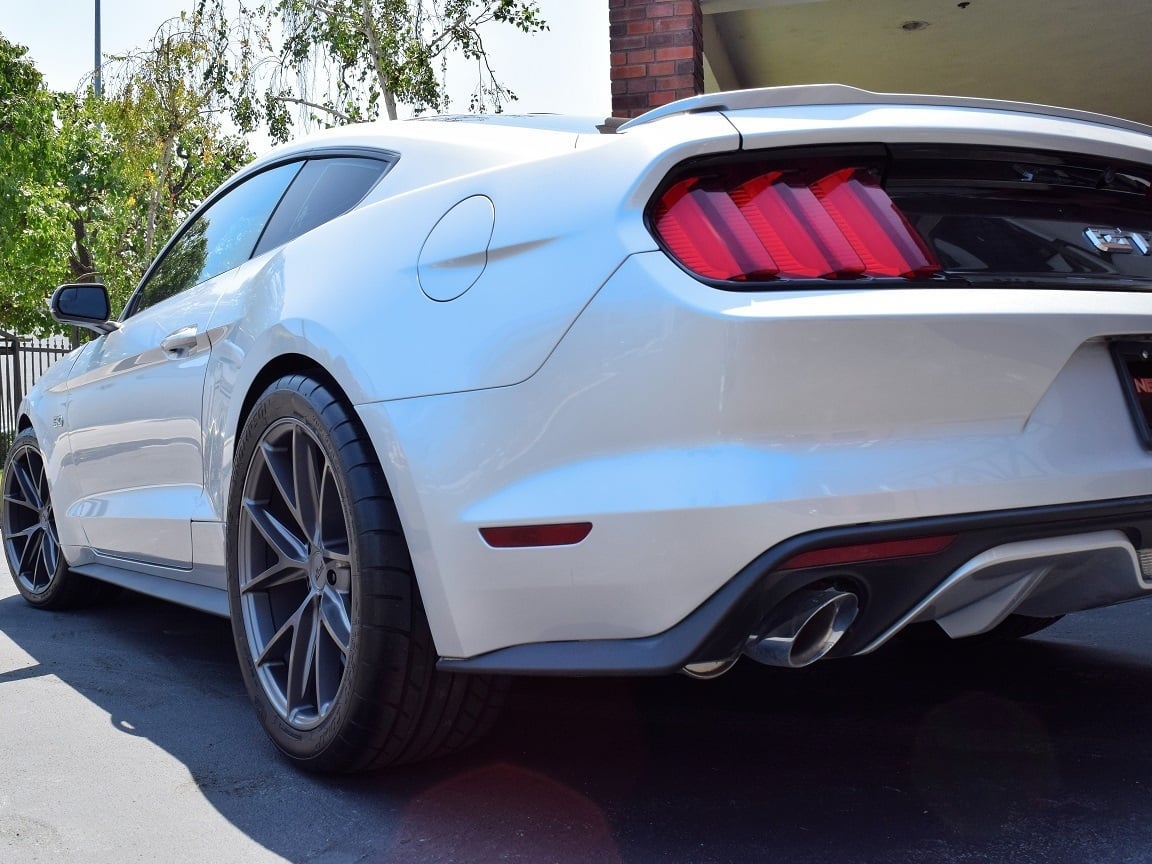
Thinking about an aftermarket exhaust system? Perhaps you’ve been hanging out among petrolheads and have heard them talking about it. Or you’re upgrading your ride with performance parts and came across this particular mod. Are you bamboozled? Don’t be. Our article will tell you why you should fit an aftermarket exhaust system. Then, we’ll talk about an oft-overlooked topic: materials.
Yes, the material with which your aftermarket exhaust system is constructed from does matter a fair bit. Why is that? We’ve got the answers right here. You can also talk to our team of experts, who’ll gladly advise you on the best choices for your car, truck, or SUV.
Why Should I Install an Aftermarket Exhaust System?
Why do I need an aftermarket exhaust system? Surely, the manufacturer knows best. They must have installed the best exhaust for my vehicle at the factory itself. If you find yourself pondering these questions, the answer is yes and no. You see, the manufacturer has to balance a myriad of factors when installing your vehicle’s exhaust system at the factory. They have to consider performance, fuel efficiency, reliability, and noise. Most auto buyers want a quiet exhaust — that’s the most critical thing for them.
However, designing an exhaust primarily for low noise levels does bring some constraints. Hence, you may not be able to obtain the best performance or fuel efficiency. Yes, an aftermarket exhaust can actually increase your fuel efficiency if properly designed and matched to your vehicle, but that’s a topic for another article. However, people fit aftermarket exhausts for two primary reasons. One is to extract more performance from their engine, and as you venture up the stages of performance enhancement, an exhaust upgrade becomes necessary, not merely optional. The second is to enhance the soundtrack of their vehicle. Whether it’s the burble of a V8, the off-beat rumble of a flat-four, or the smooth song of a V6, you’ll hear it much better with an aftermarket exhaust system.

Popular brands of aftermarket exhaust systems include aFE, Borla, Flowmaster, Magnaflow and Pypes.
Does Material Matter?
Aha, yes, it does! Aftermarket exhausts can be made from aluminized steel, stainless steel, titanium, and Inconel. Each material comes with its own distinctive properties, such as heat resistance, corrosion resistance, ease of workability, and of course, cost. Let’s compare!
Aluminized Steel
First off is aluminized steel. This material is basically iron with a minute amount of carbon, and has been coated with an aluminum-silicon alloy. This is the most popular material for aftermarket exhaust systems. That’s because it’s fairly cheap, offers reasonable corrosion resistance, and is convenient to work with. The material can easily be bent into shape. It offers a dull silver finish, which is actually quite nice if you don’t want a shiny chromed effect.
However, these exhausts are only rated to last around five years. If you’re careful, you can extend their longevity. But if you regularly park outdoors or drive through rain-soaked or snow-covered streets, you can expect a shorter lifespan. Plus, you should remember that if you bump or dent your exhaust, this will damage the protective aluminum-silicon coating and expose the iron beneath, resulting in rust.

409 Stainless Steel
Now this is the stuff that OEMs use to make their exhausts. It’s most likely what your current exhaust is made from. Typically comprised of iron with approximately 10-12% of chromium. It’s a little more expensive than aluminized steel, but can last for approximately 8-10 years with only light surface rust. This can easily be removed with a wire brush. However, the material is prone to cracking and breaking if improperly bent. Therefore, it’s best to purchase a tailormade system for your car’s make and model, rather than try to make one yourself. The finish is dull.
439 Stainless Steel
This is similar to 409 stainless steel, but contains 18% chromium and 0.5% nickel. Hence, it offers a shiny polished finish and improved rust resistance. It’s also a bit more expensive. Exhaust systems made from 439 stainless steel can easily last for over ten years.
304 Stainless Steel
A bit more expensive than 439 stainless steel, 304 stainless steel offers great corrosion resistance, making it perfect if you regularly traverse rainy or snowy roads that get salt-treated. It has 10% nickel and 20% chromium, resulting in a stunning polished finish. However, over time, the material turns golden-brown due to heat discoloration. You’ll be glad to know that 304 stainless steel exhausts can easily reach 20 years of lifespan if not damaged.
316 Stainless Steel
Identical to 304 stainless steel, the only variance is the addition of a minute amount of molybdenum. This further improves corrosion resistance, making it perfect for vehicles that spend a lot of time driving near the coast.

Titanium
Super lightweight, corrosion resistant and capable of handling serious temperatures, you’ll find titanium exhausts on high-performance sports cars. It’s also very expensive, and requires special handling and working.
Inconel
This is top-tier stuff, basically what Formula1 cars and other professional racers use. Comprised of a nickel alloy, it’s as you’d expect, super expensive and highly engineered.
Quick Tip: What’s My Exhaust Made Of?
Here’s a quick and dirty tip to see if your exhaust is made from 304 stainless steel or something cheaper. Grab a magnet and place it anywhere on the exhaust system. If it sticks, your exhaust system is made from aluminized steel, 409 stainless steel, or 439 stainless steel. If it doesn’t stick, then you’ve most likely got 304 stainless steel or something else that doesn’t contain a lot of iron.
Everything Performance at AmericanMuscle
Wondering which exhaust system is most suitable? Talk to us at AmericanMuscle. We’ve been helping gearheads find their mojo since 2003. We’ve got a variety of exhaust systems available, backed by excellent technical support and unmatched after-sales service.




